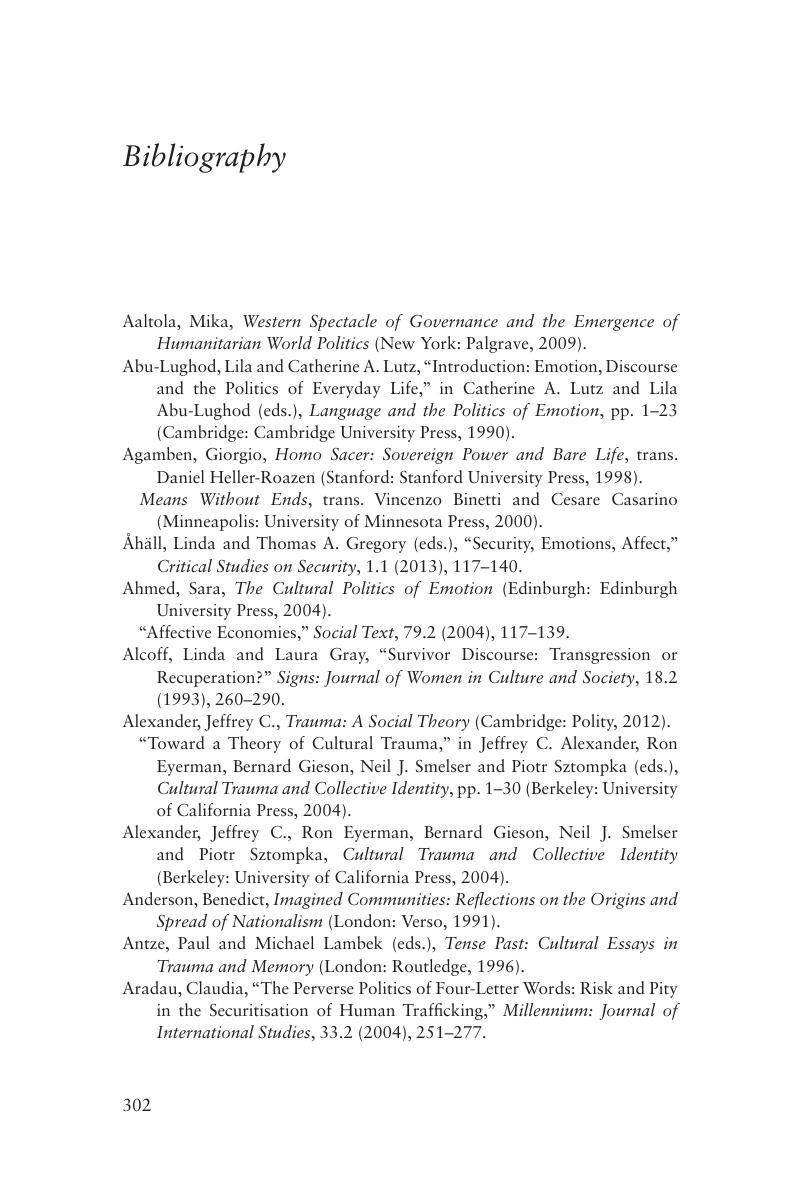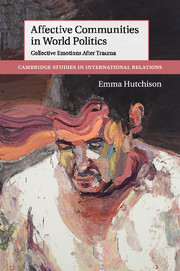Book contents
- Half title page
- Cambridge Studies in International Relations: 140
- Cambridge Studies in International Relations
- Title page
- Copyright page
- Dedication
- Contents
- Contents
- Preface
- Book part
- Introduction
- Part I Conceptual framework
- Part II The emotional constitution of political community
- Conclusion
- Bibliography
- Index
- References
Bibliography
Published online by Cambridge University Press: 05 March 2016
- Half title page
- Cambridge Studies in International Relations: 140
- Cambridge Studies in International Relations
- Title page
- Copyright page
- Dedication
- Contents
- Contents
- Preface
- Book part
- Introduction
- Part I Conceptual framework
- Part II The emotional constitution of political community
- Conclusion
- Bibliography
- Index
- References
Summary

- Type
- Chapter
- Information
- Affective Communities in World PoliticsCollective Emotions after Trauma, pp. 302 - 338Publisher: Cambridge University PressPrint publication year: 2016



